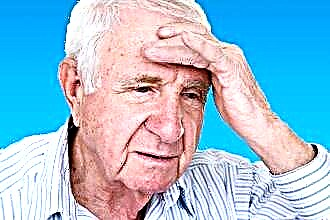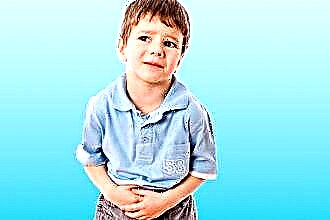Blood pressure is a rather individual value. There is, of course, an average approximate rate determined by experts for a healthy person. But its indicators are changing. It depends on age as well as gender. In addition, each person has his own norm, with which he lives his whole life and feels great. So, blood pressure at 90 years old and pressure at 10 years old are completely different values. This is due to various changes that occur to people throughout their life: the body itself, attitude towards life, occupation, habits, physical activity are changing.
 Old age has its own characteristics, this also applies to blood pressure indicators. Hypertension can haunt a person from a young age, and the situation usually gets worse with age. But sometimes high blood pressure begins to make itself felt only after 60-65 years.
Old age has its own characteristics, this also applies to blood pressure indicators. Hypertension can haunt a person from a young age, and the situation usually gets worse with age. But sometimes high blood pressure begins to make itself felt only after 60-65 years.
Arterial hypertension in old age can be both primary and secondary.
The development of primary hypertension (essential) after 65 is a rare occurrence. Usually by this time the disease already exists. But there are two options for the development of the disease: either the patient already knows about the presence of this kind of pathology, or it was present in the body for a long time without symptoms, practically not showing itself in any way. The disease begins to progress, and the person seeks a doctor.
If the "experience" of hypertension is solid, the situation may worsen due to the wrong behavior of the patient himself: he is treated on a case by case basis, neglects the doctor's advice, and completely arbitrarily stops treatment.
Secondary hypertension most often occurs at this age. It is also called symptomatic. An elderly person already has one or more diseases that are the result of improper lifestyle, hereditary predisposition or the result of aging of the body. Acquired or congenital abnormalities are often accompanied by an increase in blood pressure. In this case, arterial hypertension in the elderly is a symptom of another disease.
In addition, the very treatment of chronic diseases in old age can cause an increase in blood pressure. Long-term use of drugs that have a lot of side effects, in the end, triggers the mechanism for the development of hypertension. In this case, the so-called "drug" hypertension is diagnosed.
Age-related changes in the body also become the cause of hypertension in old age, in particular, this applies to the cardiovascular system.
Here is a list of possible causes that increase blood pressure at age 60 and older:
- vessels become brittle, thin;
- blood changes its composition, becomes more viscous;
- increased blood volume;
- vascular channels are narrowed;
- the walls of the vessels become dense, less elastic.
What to say a strict "no" after 65
Certain factors can cause the development of hypertension or provoke a deterioration in its course with age. They negatively affect the vascular system of a person at any age. In elderly patients, their impact increases significantly.
- The most dangerous factor is psychological. After 65 years of age, the nervous system is very sensitive to any stimulus. Strong emotions, feelings, resentment, anxiety, fear can cause a sharp increase in pressure. Loved ones at this age should be protected from any stress by creating a warm, friendly stop around.
- Poor nutrition is no less harmful. You also need to keep an eye on him. Less and less often you can indulge yourself with salty, smoked, fatty, rich foods. Key principles: less salt and sugar, less fat, fewer calories and more vitamins.
- Lack of physical activity provokes many diseases in the elderly. Moving with age is more and more difficult, but it must be done. You should not bother yourself to exhaustion, but a moderate load on muscles, joints, blood vessels and heart should be daily.
- Chronic fatigue weakens the heart, it cannot cope with the stress imposed on it. With age, you need to rest more and more often. It is imperative to have adequate sleep every day.
- Mental overload can also hurt. But exercising your mind is essential, especially for the elderly. Thus, a person prevents the onset of senile dementia. However, everything is good in moderation, not only the body, but also the brain needs rest.
- Bad habits in old age significantly shorten life. If you didn’t manage to defeat them in your youth, it’s time to do it now. Smoking and drinking are incompatible with normal blood pressure readings.

Blood pressure at 65 in men and women
Men suffer from hypertension more often than women. This is easily explained: men, as a rule, pathologically dislike doctors, they are less attentive to their health, do not attach importance to important "little things". The stronger sex is more susceptible to harmful addictions (alcohol, cigarettes) and is more often subjected to strong physical exertion, has a large mass and body size.
The male half also, due to its masculinity, is forced to hide strong feelings in itself, to suppress emotions, fears, tears, confusion. Men often bear a huge burden of responsibility for maintaining their families; they have to work hard and solve complex problems.
All these factors increase the risk of developing hypertension in the male population.
Women are naturally more fragile, they are weaker physically, not as large as men. The fairer sex is more emotional, but usually they always give vent to their emotions, receiving psychological relaxation, without accumulating stress in themselves. Women's destiny is to be a mother, so, on average, they are less addicted to alcohol and tobacco products. Women pay more attention to their health status and visit doctors more often. All this explains the statistics, according to which women are less likely to be diagnosed with hypertension.
 Even the average rate of blood pressure in both sexes, starting from the age of 10, is different. For men aged 40, for example, this rate is 129/81, and for women - 127/80.
Even the average rate of blood pressure in both sexes, starting from the age of 10, is different. For men aged 40, for example, this rate is 129/81, and for women - 127/80.
However, by the age of 50, the situation changes: the pressure indicators in women are more overestimated than in men. With age, especially after 65 years, this difference becomes more and more significant. Now women are at the forefront of the risk group for the development of hypertension.
This is due to hormonal changes that occur during the decline of fertility (menopause). The effects of pregnancy and childbirth also affect the increase in pressure. These conditions are a huge stress for the female body, which does not pass without leaving a trace and makes itself felt with age.
Systolic hypertension in the elderly
For the elderly, especially closer to the age limit of 90 years, the systolic form of hypertension is more characteristic. In this case, only the upper pressure indicators (systolic) increase, while the lower ones either do not change or become smaller.
Systolic pressure reflects the intensity of the effect of ejected blood on the vessels during heartbeat. The upper pressure norm is considered to be frames from 110 to 130 mm. rt. Art.
Diastolic pressure shows the strength of the effect of blood flow on the vessels during the resting period of the heart muscle. Its norm is from 65 to 80 mm Hg. Art. in middle age and from 80 to 89 mm Hg. in the elderly.
An interesting fact: after 90 years of age, the pressure begins to decrease again, its indicators become lower compared to those of 65 years of age.
Sclerotic systolic hypertension in the elderly is the most common variant of secondary (symptomatic) hypertension at the age of 90 and older.
This increases the rigidity of the vascular walls and the loss of their plasticity. Sclerosis is the replacement of elastic tissues of an organ with dense connective tissues. They grow, narrowing the passage in the vessel. This happens due to the aging of the body.
Another similar condition is atherosclerosis. In this case, vasoconstriction occurs due to cholesterol deposits on the walls.
Hypotension in old age
Low blood pressure is called hypotension. This condition is also quite dangerous for an elderly person. And yet, if you choose the lesser of two evils, then it is better to give preference to hypotension.
Low pressure has its own characteristic features:
- headache;
- low working capacity;
- distraction of attention, forgetfulness;
- fast pulse;
- weakness;
- fast fatiguability;
- sleepy state during the daytime;
- often dizzy and dark in the eyes;
- pain in the region of the heart;
- disturbance in the work of the gastrointestinal tract;
- sweating;
- coldness in the limbs;
- sleeplessness at night.
 In an elderly person, hypotension causes lethargy, apathy, depression, bad mood, weakness, inability to enjoy life.
In an elderly person, hypotension causes lethargy, apathy, depression, bad mood, weakness, inability to enjoy life.
Among the reasons for this condition in old age are the following:
- frequent neuroses, an abundance of stress in life;
- brain injury;
- vegetative-vascular dystonia;
- improper work and rest regime;
- side effects from taking certain medications;
- hormonal changes;
- chronic diseases;
- malnutrition;
- Iron-deficiency anemia.
It is imperative to treat hypotension; neglect of this condition can result in brain hypoxia and, as a result, ischemic stroke. Another dangerous condition, as evidenced by a drop in pressure, can be internal bleeding.
Blood pressure rate at 90
Is arterial hypertension in the elderly a symptom of an illness or a sign of age? The answer can be this: it is a disease that is often (but not always) a sign of old age. With age, the pressure increases steadily. At the age of 90, the reverse process begins - a gradual decline in indicators. At the same time, for women, the average rate in old and old age still exceeds the rate for men.
However, high blood pressure in old age can be called the norm conditionally, because it still needs correction, like any pathological condition.
Feelings of a person with increased pressure is one of the main indicators that a doctor should be guided by when prescribing treatment. Each age has its own indicators of the norm.
At the same time, there is the concept of individual indicators at which a person can feel comfortable, despite exceeding the standard norm.
It is good if a person keeps a diary of observations of their pressure, regularly writing down all the data of the measurements taken there. In this case, you can describe your state at the time of measuring the pressure. Such a diary will help to establish an individual rate of tonometer indicators for a specific person.
| Age | Pressure indicators in women | Pressure indicators in men |
|---|---|---|
| 20 years | 116 to 72 | 122 to 79 |
| 30 years | 120 to 75 | 125 to 79 |
| 40 years | 127 to 80 | 128 to 81 |
| 50 years | 137 to 84 | 134 to 83 |
| 60 years | 144 to 85 | 141 to 85 |
| 70 years | 159 to 85 | 144 to 82 |
| 80 years | 157 to 83 | 147 to 82 |
| 90 years | 150 to 79 | 145 to 78 |
>
Hypertension in older people differs from hypertension in young and middle age.
Features of hypertension in old age:
- predominant increase in systolic pressure;

- most often the cause of the increase in pressure is symptomatic hypertension;
- the most common form of the disease is sclerotic systolic hypertension;
- pressure increases with age;
- after 90 years, the pressure drops;
- in women, the pressure in old age is higher than in men;
- the most dangerous risk factor is psychological.
Blood pressure surges in the elderly (hypertensive crisis) are quite common. This condition is characterized by a sharp deviation from the indicators of the age norm. At the first suspicions of the development of a crisis, it is necessary to seek help, the price of delay can be a person's life. Distinctive features of a hypertensive crisis in elderly people:
- increased upper and pulse pressure;
- the condition develops gradually;
- pronounced signs may be absent;
- the acute onset is not typical;
- the developed crisis state can last for a long period;
- frequent relapses occur;
- a large percentage of the development of serious disorders of the cardiovascular system;
- high likelihood of a stroke.
With a sudden increase in pressure in an elderly person, one should pay attention not to the values of the tonometer indicators, but to how far these values deviated from the usual norm for a particular patient. Sometimes, at first glance, the pressure increased insignificantly, but for this patient such a condition may be critical, because for his “norm” this state of affairs is not typical.
Hypertension treatment at 90
Treatment of hypertension at such a serious age must be very careful. An individual approach is needed for each patient. When prescribing drug therapy, one should take into account:
- the form of the disease;
- pressure indicators and their compliance with the age norm;
- feelings of the patient himself;
- The "age" of the disease ";
- the presence of other diseases;
- drug compatibility and their side effects.
It is best to start treatment with lifestyle adjustments, sometimes these measures are enough to improve the situation.
 To combat hypertension, it is best to choose the milder and more sparing methods of traditional medicine.
To combat hypertension, it is best to choose the milder and more sparing methods of traditional medicine.
If medication is still needed, it is better to start with small doses.
It is necessary to reduce the pressure carefully and to certain limits, so as not to cause a sharp hypotonic attack and, as a consequence, the development of collapse.
Collapse is a sign of vascular insufficiency, it is accompanied by a decrease in pressure to critical levels, a slowdown in blood circulation, a weakening of heart contractions, a decrease in the volume of blood moving through the vessels, and a decrease in the tone of the vascular walls. Oxygen starvation of the whole organism develops, all its functions are disturbed, the metabolic process slows down. If help is not provided in time, the person may die.
Prescribed drugs:
- ACE inhibitors "Captopril" (used for hypertensive crises), "Enalapril" (prescribed for daily use).
- Angiotensive receptor blockers (they prevent the vessels from narrowing, they must be used for a long time) "Irbesartan", "Losartran", "Valsartan".
- Calcium channel blockers "Nifedipine", "Amlodipine", "Felodipine" (long-acting drugs, dilate blood vessels, stabilize the pulse).
- Alpha-adrenergic blockers "Doxazosin", "Tonokardin" (promote the expansion of peripheral vessels, prevent new attacks, are applicable for long-term therapy).
- Beta-blockers (they are usually used if the patient has several diseases at the same time, they dilate blood vessels) "Bisoprolol", "Vasocordin", "Metoprolol".
- Diuretics "Hydrochlorothiazide", "Aldactone", "Indapamide" (they are diuretics, remove salts and toxins with liquid, but wash out useful potassium), "Furosemide" (acts instantly, but must be used in extreme cases).
- Neurotropic drugs (calms the central nervous system) "Rilmenidine", "Moxonidine".
Hypertension in the elderly needs a competent approach and a highly qualified doctor.During treatment, several drugs are prescribed simultaneously, which should enhance the effect of each other and combine well, while having a minimum of side effects and not worsen the symptoms of existing diseases.
Almost every second person at the age of 90 suffers from hypertension. Mainly, the disease develops due to aging of the body or due to the presence of other pathologies. The pressure norm in an elderly person is higher than the generally accepted one, and it is not recommended to lower it. Therapeutic measures are selected based on the individual feelings of the patient. Treatment of hypertension in old age is necessary, it will give the patient the opportunity to live the rest of his life with quality and will help to significantly increase its duration.




